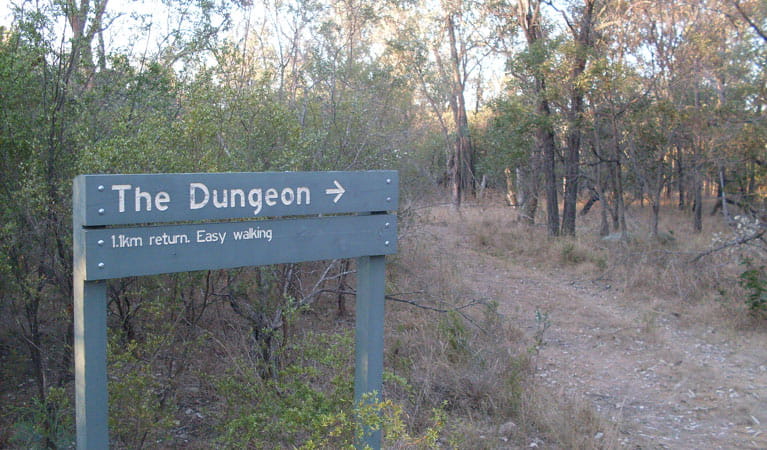Dungeon lookout
Kwiambal National Park
Overview
Where Severn River enters a steep gorge, you’ll find The Dungeon, with this lookout offering superb views down into the swell, particularly after rain.
- Type
- Lookouts
- Where
- Kwiambal National Park in Country NSW
- What to
bring - Hat, sunscreen, drinking water
- Please note
- There is limited mobile reception in this park
- The weather in this area can be extremely cold during winter and unpredictable. Please ensure you’re well-prepared, bring appropriate clothing and equipment and advise a family member or friend of your travel plans.
After rain, the Severn River churns with extra volume, its water rushing in thunderous flow. A deep river gorge called The Dungeon is the most dramatic passage, with steep walls and granite cascades. This lookout takes you to the top of the gorge, with a scenic view down into the swell. Be sure to keep an eye on the kids – there are cliffs nearby and surfaces are slippery in the wet.
The lookout also offers fine views across the surrounding countryside, with white cypress pines, tumbledown gums, and ironbarks knitting together to form a rich canopy of native trees. On your way to the lookout, you’ll pass open plains areas with eastern grey kangaroos and red-necked wallabies: be sure to bring your camera.
The best time to see animals is September through to March. There are a number of migratory birds that you won’t see until spring, so if birdwatching is of interest, plan your trip accordingly. Mornings and evenings are best for visits, especially on hot days; avid hikers can extend their day by continuing on Junction walk, then settle down for a long barbecue at one of the tables in Lemon Tree Flat campground.
Map
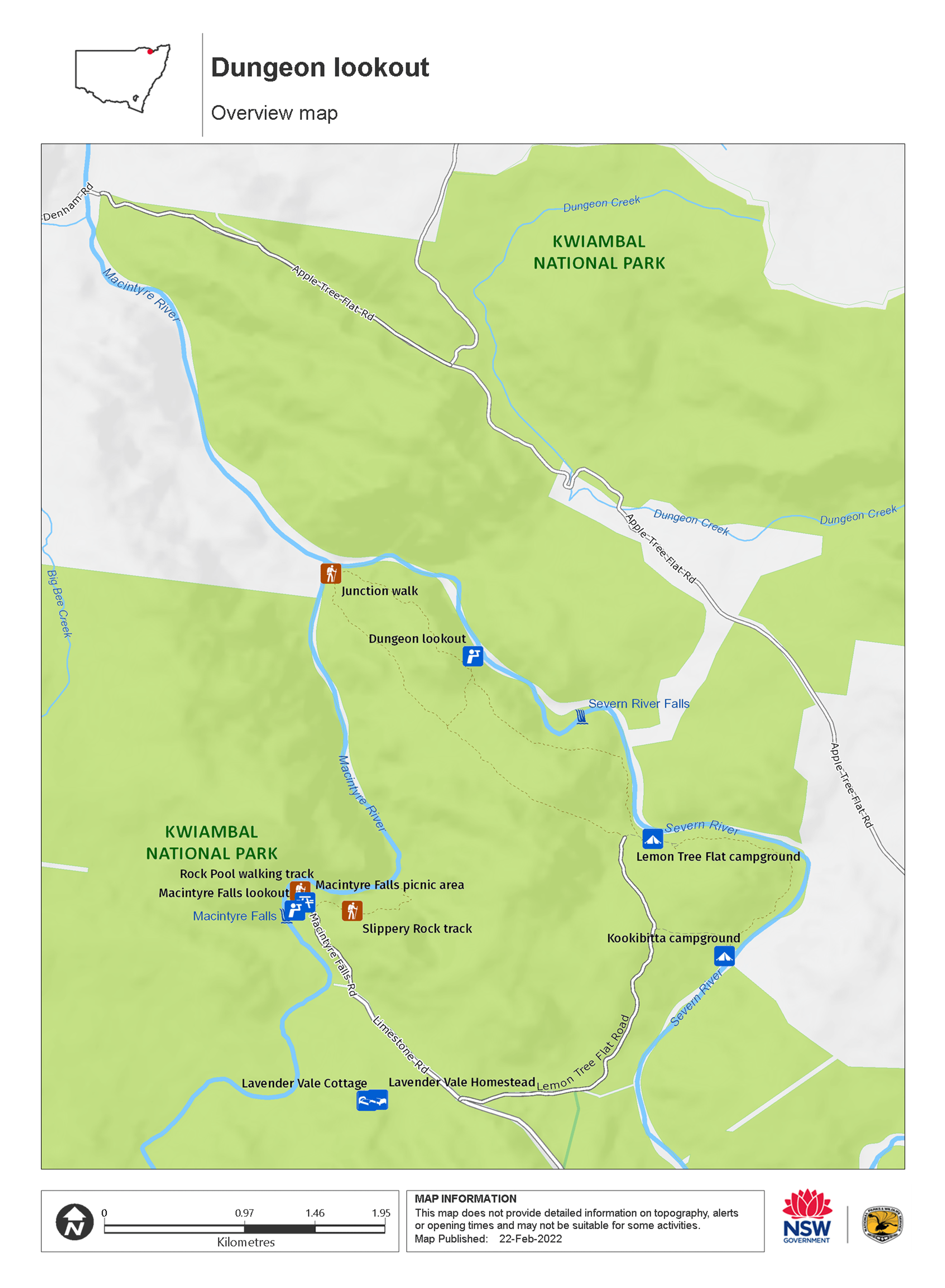
Map legend

Local alerts
For the latest updates on fires, closures and other alerts in this area, see https://www.nationalparks.nsw.gov.au/things-to-do/lookouts/dungeon-lookout/local-alerts
General enquiries
- National Parks Contact Centre
- 7am to 7pm daily
- 1300 072 757 (13000 PARKS) for the cost of a local call within Australia excluding mobiles
- parks.info@environment.nsw.gov.au
Park info
- in Kwiambal National Park in the Country NSW region
Kwiambal National Park is always open but may have to close at times due to poor weather or fire danger.
Visitor info
All the practical information you need to know about Dungeon lookout.
Getting there and parking
Dungeon lookout is in the northern precinct of Kwiambal National Park. To get there:
- From Ashford, take Wallangra Road north west
- Turn right onto Sandy Creek Road
- Then left onto Limestone Road and continue into Kwiambal National Park.
- Turn left onto Macintyre Falls Road
- Turn right onto Lemon Tree Flat Road and follow the signs to the campground
- Leave the car here and follow Junction walk to the lookout
Alternatively:
- Travel along Inverell Street in Ashford and turn onto Limestone Road.
- At the intersection of Limestone Road and Sandy Creek Road turn right, and continue into Kwiambal National Park.
Road quality
- Unsealed roads
Vehicle access
- 2WD vehicles
Weather restrictions
- All weather
Parking
Parking is available at Lemon Tree Flat campground
Best times to visit
There are lots of great things waiting for you in Kwiambal National Park. Here are some of the highlights.
Spring
Between the warmer months of September and March, spectacular wildflower displays decorate the bush beneath white cypress pines.
Summer
The many swimming opportunities, including rivers, secluded beaches, and even a plunge pool, makes Kwiambal a terrific destination in the height of summer.
Weather, temperature and rainfall
Summer temperature
Average
16.9°C and 30.6°C
Highest recorded
41.2°C
Winter temperature
Average
2.7°C and 18°C
Lowest recorded
-6.3°C
Rainfall
Wettest month
January
Driest month
June
The area’s highest recorded rainfall in one day
160mm
Facilities
Drinking water is not available in this area, so it’s a good idea to bring your own.
Toilets
- Non-flush toilets
Picnic tables
Barbecue facilities
- Gas/electric barbecues (free)
- Wood barbecues (bring your own firewood)
Carpark
Maps and downloads
Permitted
Fishing
A current NSW recreational fishing licence is required when fishing in all waters.
Prohibited
Pets
Pets and domestic animals (other than certified assistance animals) are not permitted. Find out which regional parks allow dog walking and see the pets in parks policy for more information.
Smoking
NSW national parks are no smoking areas.
Learn more
Dungeon lookout is in Kwiambal National Park. Here are just some of the reasons why this park is special:
Aboriginal cultural heritage
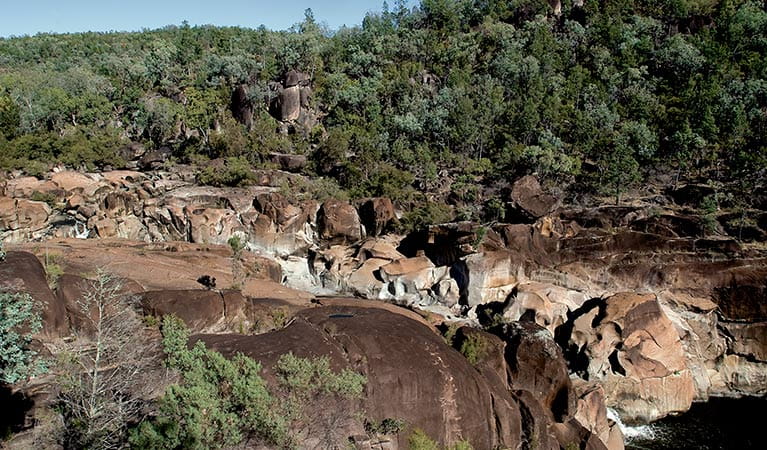
Kwiambal takes its name from the aboriginal people of the Ashford district. Rich in food, water and materials, the area provided a year-round living environment for their ancestors, with sacred sites and hunting grounds spread throughout the park.
Animals
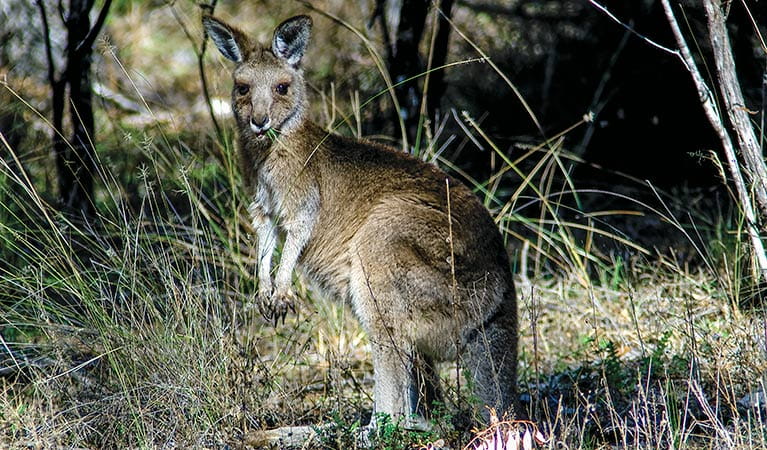
There are five rare or threatened plant species in the park: severn wattle, Rodd’s star hair, caustic vine, daisy bush and toadflax. Feel free to look, but please be careful not to damage the plants. In the warmer months of September to March, the wildflowers bloom throughout the bush. Like its flowers, Kwiambal is home to dozens of notable animal species, including 32 types of reptile, 11 frogs, and 30 species of mammal. Some 18 species are threatened or endangered, including koalas, squirrel gliders, and five-clawed worm skinks. There are also an astonishing 101 types of bird, making the park a hot spot for avid birders. Keep an eye out for painted honeyeaters, barking owls, hooded robins, and diamond firetails.
- Dungeon lookout Where Severn River enters a steep gorge, you’ll find The Dungeon, with this lookout offering superb views down into the swell, particularly after rain.
- Limestone Caves walking track Limestone Caves walking track is a short, easy walk in Kwiambal National Park, near Ashford. It’s popular with families keen to explore the caves, spot the local bats and enjoy a picnic.
- Macintyre Falls lookout Adjacent to a well-equipped picnic area, Macintyre Falls lookout offers scenic views over the river, with nearby swimming, hiking and fishing opportunities.
- Slippery Rock walking track Slippery Rock walking track in Kwiambal National Park, near Inverell, offers spectacular gorge views as well as fishing, birdwatching and vibrant wildflowers in spring.
Historic heritage
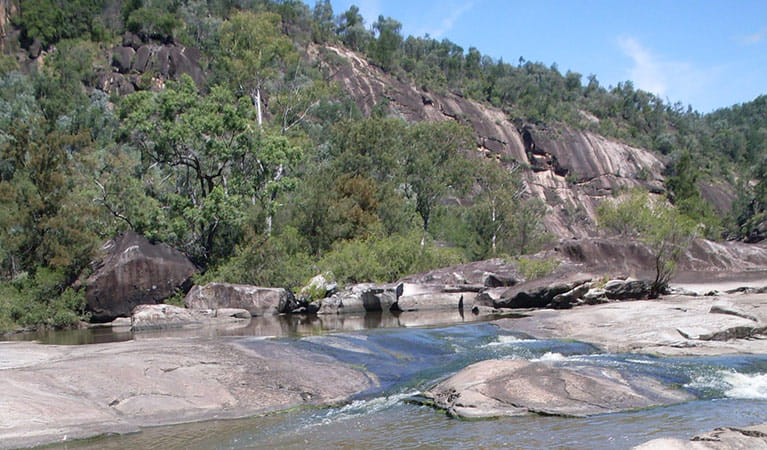
The flat areas of the park have been subjected to farming of tobacco, giving way to cereal crops and the mining of various minerals and sapphires. Unsurprisingly then, there are a number of historical landmarks within the park, including tobacco-drying sheds, woolsheds, fruit trees, storage sheds, and the remains of a house. History enthusiasts will want to seek these out on a visit.
Native rainforest
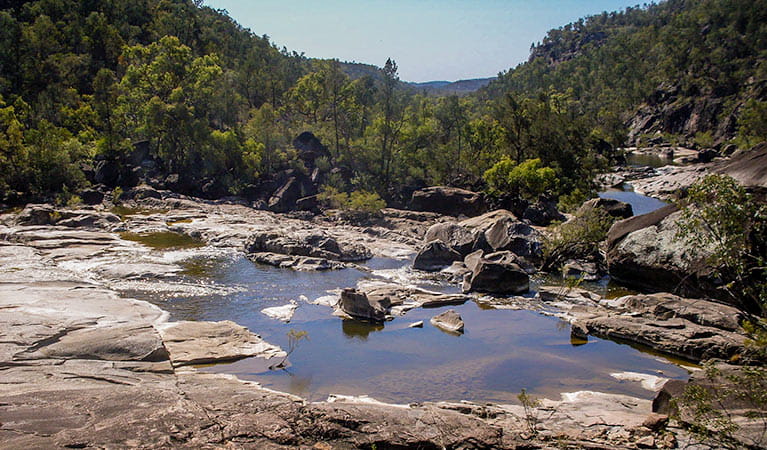
Kwiambal contains 15 per cent of the native dry rainforest left in NSW. The vegetation is dominated by white cypress pines, silver-leaved ironbarks, and tumbledown gums. Unfortunately, much of the planning area has been subjected to logging in the past, though considerable regeneration makes it a worthy destination for nature-lovers.
- Dungeon lookout Where Severn River enters a steep gorge, you’ll find The Dungeon, with this lookout offering superb views down into the swell, particularly after rain.
- Junction walk Junction walk offers a stroll through ironbarks and pine trees to the meeting of Severn and Macintyre rivers, with swimming, picnicking, and birdwatching opportunities.
- Limestone Caves walking track Limestone Caves walking track is a short, easy walk in Kwiambal National Park, near Ashford. It’s popular with families keen to explore the caves, spot the local bats and enjoy a picnic.
- Macintyre Falls lookout Adjacent to a well-equipped picnic area, Macintyre Falls lookout offers scenic views over the river, with nearby swimming, hiking and fishing opportunities.
- Slippery Rock walking track Slippery Rock walking track in Kwiambal National Park, near Inverell, offers spectacular gorge views as well as fishing, birdwatching and vibrant wildflowers in spring.

